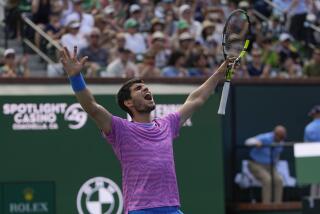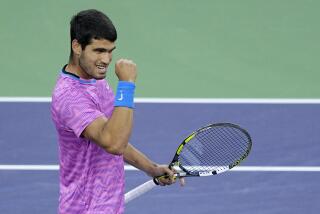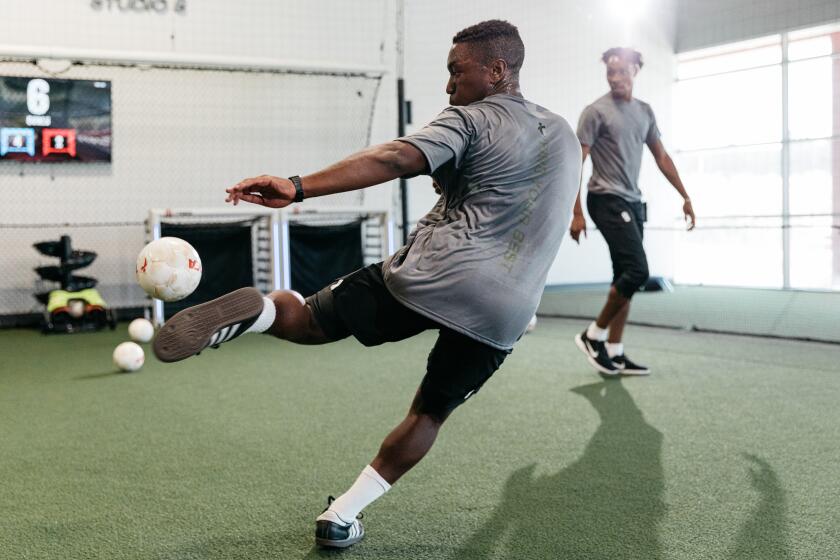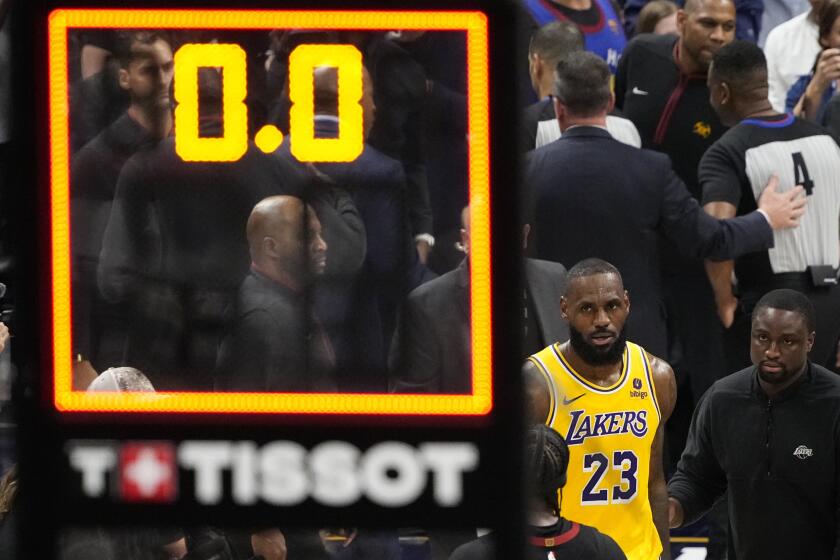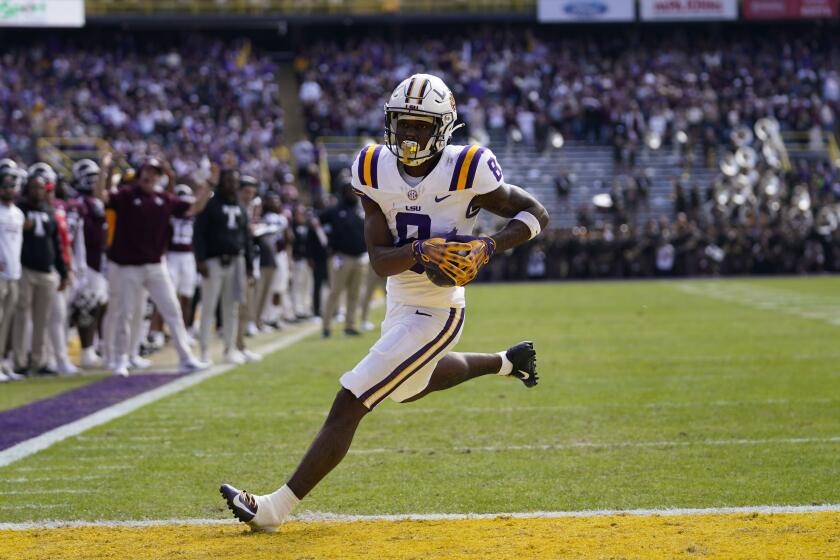Rafael Nadal’s win over Roger Federer leaves a strange taste
Tennis did its best to serve up a classic dish Thursday night in the BNP Paribas Open at Indian Wells. But a dash of this and a pinch of that were missing.
We expect plenty of spice every time Roger Federer plays Rafael Nadal. It is a legacy built on their previous 28 matches, most of them thrillers, over nearly a decade.
But minus the usual paprika, Nadal still managed to slap out a 6-4, 6-2 victory. It was somewhat convincing. Also somewhat unsettling.
When these two play, we expect some 7’s in the score line. Also, some numbers in parentheses after tiebreaker sets. A line that reads 6-4, 6-2 in 1 hour 24 minutes, with the ending feeling like a monotone, rather than a crescendo, is surprising.
There was a crowd of 16,100 —maybe more if they all squeezed over a seat or two — in the Indian Wells Tennis Garden. When the match began shortly after 7 p.m., there were perhaps 100 empty seats scattered about. By the first player changeover at 2-1, the stragglers had arrived and this, a Thursday night quarterfinal at a non-Grand Slam tennis tournament in the middle of a desert, had the feel of Indianapolis and gentlemen starting their engines.
There were 28 Grand Slam tournament titles represented on the court, 17 for Federer and 11 for Nadal.
It was the first time they’d ever met in a quarterfinal, and only the third time they’d ever met earlier than a semifinal. That was because, while Federer had maintained a high ranking at No. 2, Nadal had taken seven months off to heal a knee injury and had slipped to No. 5. And the form of the draw puts No. 2 against No. 5 in the quarters.
It was also only the fifth time they had played each other in the United States, three times at the Miami tournament that always immediately follows this one, and last year in the semifinals here, where Federer prevailed and went on to win the title.
So the scene, and the hype, was not only predictable, but justified. Federer is 31 now, Nadal 26, but the public, with non-erasable memories of classic five-set battles at Wimbledon and elsewhere, still sees them as two gunfighters, facing off at high noon, hands poised over pistols.
Even their personality contrasts feed the fire. Federer appears to be a worldly sort, ever poised, a diplomat who emotes mostly with smiles and shrugs. Nadal is a 10-year-old who can’t wait to come outside and play, whose favorite gesture is a fist pump.
And so the stage of great expectations was set. To the lucky ticket-holders, and to those eagerly tuned in to watch on TV, this was nothing less than the final, four days early.
But what followed was an hour and a half of under-delivery.
At the 30-minute mark of the match, after the usual feeling-out process had been completed, Nadal broke serve by sending a passing shot past an approaching Federer. That made it 4-3, and was revealing in itself.
In this day and age of slower courts and rackets that might as well be called rocket-launchers, few players even attempt to get to the net much. That’s because the ball just flies past them on one side or the other.
Thursday night, Federer approached often and in key spots that represented all-or-nothing moments.
He even said afterward
that he discovered early in the match that he would have to adjust the way he played.
When the greatest player in the history of the game, if you use major titles as a measuring stick, changes the way he plays, tries to force a quicker ending to points, the likely reason is an injury.
He has admitted recently to having a back problem, and has announced he will not play again for seven weeks,
until the May 6 tournament in Madrid. But that schedule announcement came before any word of a bad back.
Asked directly about it, Federer said, “I could play. I was happy to be out there and able to compete. It’s obviously a small issue, but one that doesn’t work against guys like Rafa.”
Then there was Nadal, whose seven-month absence created speculation that his bad knee would never allow him to be the same player.
Nadal, still powerful off both sides and as fierce a competitor as the game has ever seen, moved and hit and thought well throughout. But the knee appears to have stolen a tad of his mobility and he seems at times to favor it.
His match analysis: “I played a great first set. But the second set was strange. Roger didn’t seem to fight as much as usual. Maybe it was back problems.”
Straight stuff. Not much salt and pepper there. Kind of like the match itself.
More to Read
Get our high school sports newsletter
Prep Rally is devoted to the SoCal high school sports experience, bringing you scores, stories and a behind-the-scenes look at what makes prep sports so popular.
You may occasionally receive promotional content from the Los Angeles Times.
